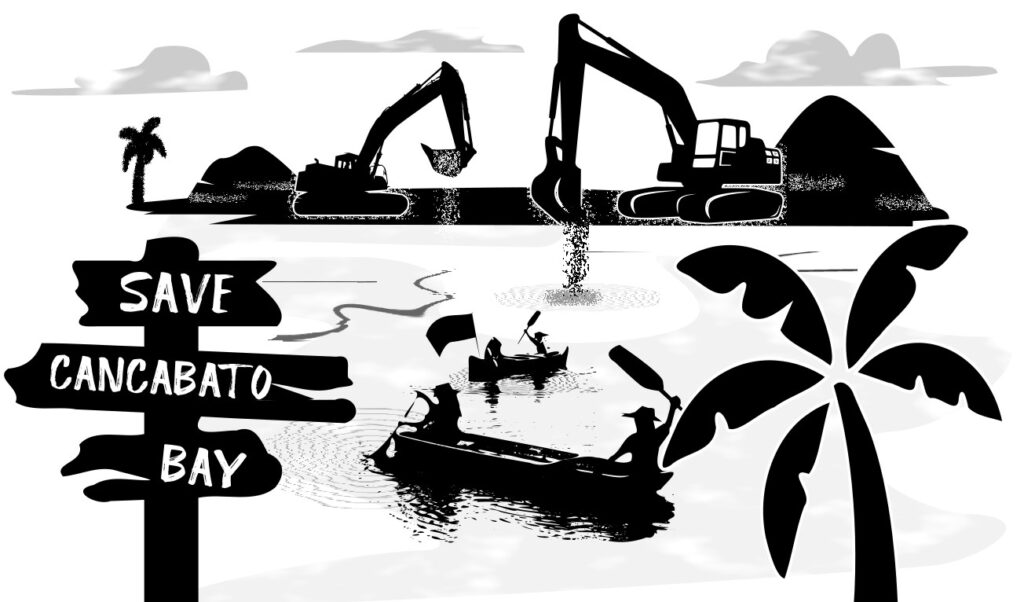Save Cancabato Bay from reclamation


Ten years after supertyphoon Yolanda’s storm surge ravaged Tacloban City, the local government has yet to make a significant step to avoid the next disaster. Instead, it further pushed a reclamation project that was not only the opposite of preparation, but will destroy the entire Cancabato Bay ecosystem and kill the livelihood of many fishermen who rely on it.
The storm surge left the bay filled with debris from shattered houses, vehicles and various items. This affected the harvested fish and marine resources. Instead of clearing and cleaning up the bay, the local government’s solution is to completely fill and kill it.
In 2015 the local government of Tacloban first pushed the ₱3.46-billion Tacloban causeway project purportedly to serve as storm surge barrier, alleviate traffic, and boost tourism. It is lumped with other bridge and road projects in Samar and Leyte pushed by the Japan International Cooperation Agency. Loans from the Asian Development Bank and other imperialist institutions will partly fund construction.
The project aims to build a 2.6-kilometer long and over four-meter high causeway over Cancabato’s embankment or coast from the city center (Magsaysay Blvd.) to Barangay San Jose (Kata-Sisan Point). For this, rocks and soil will be dumped on soft parts of the coast to support the road. To avoid completely blocking the water flow, culverts will be placed in five strategic structural points.
From the outset, affected residents and fisherfolk have strongly opposed the project. It will destroy the coast where their boats and even houses are located. They know this is no different from the 2013 “no build zone” city ordinance, or the prohibition to build houses 40 meters from the coast, which drove them out of their communities. Instead of real rehabilitation, the government and its accomplice foreign bank exploited the typhoon to divest land from the fishermen, as well as the coast and bay.
According to Save Kankabatoc Advocacy, an alliance of residents, fisherfolk and environmental groups, the claims of JICA and the local government that Taclobanons will gain “benefits” and “savings” from the reclamation and causeway are baseless.
The causeway will not stop any storm surge, according to the group. It is not even in the right location. Instead, it will block the outward flow of water from the city and may result in frequent and endless floods. It will deprive 1,000 fisherfolk and families of their livelihood. Neither will it resolve traffic because drivers already refused to ply on it. They say they will get no passengers along its entire length. The bay also plays a major role in Tacloban’s culture and history.
The group knows the causeway is part of a more comprehensive and devious plan of the local government to reclaim or fill the 400-hectare Cancabato Bay and “transform” it into a central commercial district. “It will kill the bay and its entire ecosystem to give way to the construction of buildings and commercial centers that will mainly benefit foreign businesses,” they say.
Cancabato Bay is not “dead,” contrary to government claims to justify the reclamation projects. The city local council even declared the bay a protected reservation area in 2003. In fact 3,649 fishermen from 16 barangays rely on it for livelihood. Danggit, seashells, crabs, and other marine life thrive here. It has 26 hectares of mangroves remaining.
Just on October 1, the local office of the Department of Environment and Natural Resources suspended all reclamation operations in the bay due to the lack of proper permits and the destruction of protected mangroves. Despite this, the city’s mayor, Alfred Romualdez, continues to defend the project.








